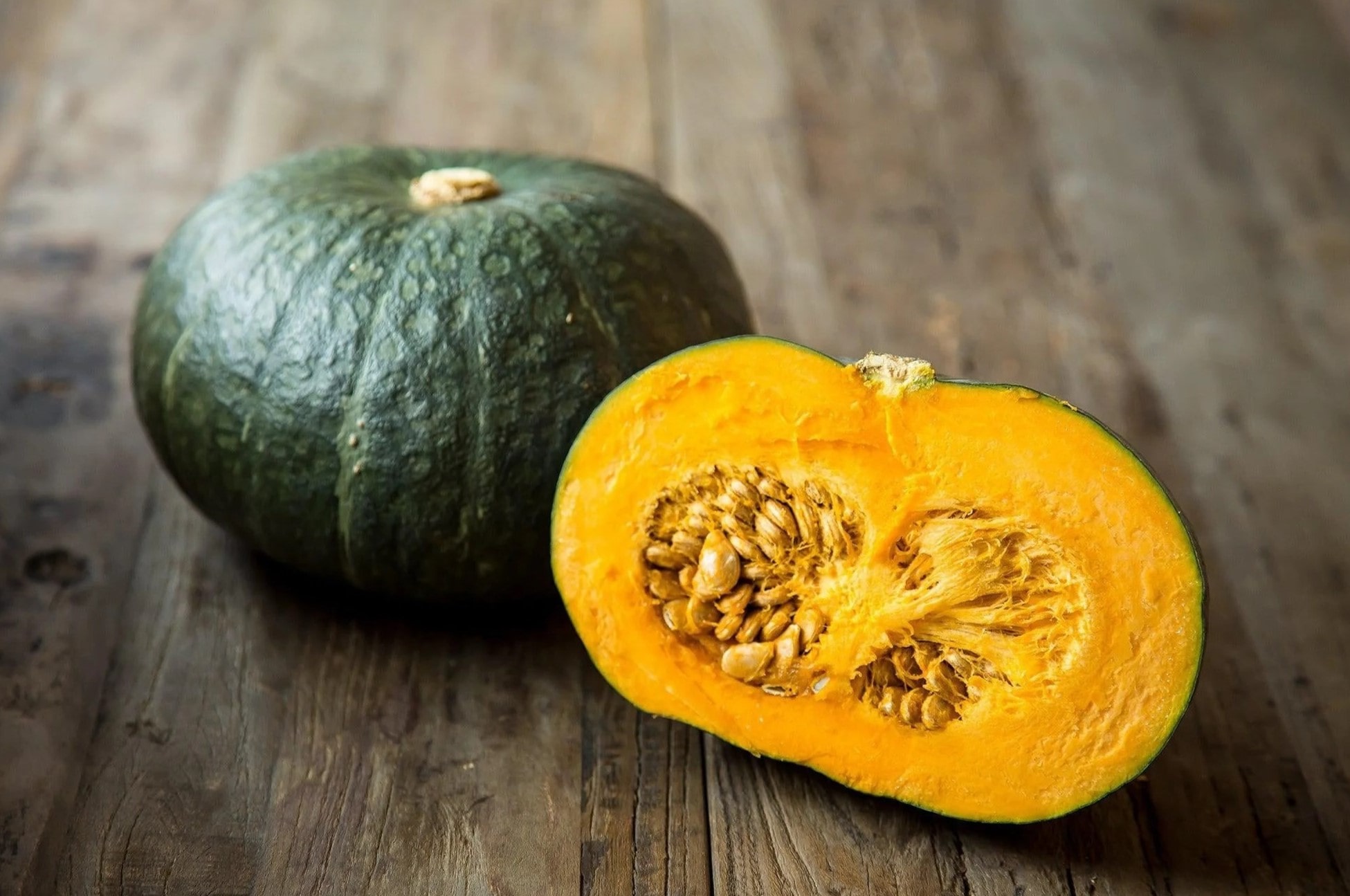
What is kabocha squash? Kabocha squash, often called Japanese pumpkin, is a winter squash with a sweet, nutty flavor. Its green, bumpy skin and vibrant orange flesh make it a standout in the squash family. This versatile veggie can be roasted, steamed, or pureed, adding a rich taste to soups, stews, and desserts. Packed with vitamins A and C, fiber, and antioxidants, kabocha squash is not just tasty but also nutritious. Whether you're a seasoned chef or a kitchen newbie, incorporating kabocha squash into your meals can elevate your culinary game. Ready to learn more? Let's dive into 25 fascinating facts about this delightful squash!
Key Takeaways:
- Kabocha squash, also known as Japanese pumpkin, is a nutritious and versatile vegetable with a sweet flavor. It's high in vitamins A and C, low in calories, and can be used in a variety of dishes.
- Growing kabocha squash requires warm, sunny climates, well-drained soil, and regular watering. It can be roasted, steamed, or used in soups and desserts. Plus, it's packed with health benefits like supporting eye health and boosting the immune system.
What is Kabocha Squash?
Kabocha squash, also known as Japanese pumpkin, is a versatile and nutritious vegetable. It has a sweet flavor and a texture similar to sweet potatoes. Here are some fascinating facts about this unique squash.
-
Origin: Kabocha squash originated in Japan and is a staple in Japanese cuisine.
-
Appearance: It has a dark green, knobby skin with bright orange flesh inside.
-
Flavor: The taste is a mix of sweet potato and pumpkin, making it perfect for both savory and sweet dishes.
-
Nutritional Value: High in vitamins A and C, kabocha squash is also rich in fiber and antioxidants.
-
Calories: One cup of cooked kabocha squash contains only about 49 calories.
Growing Kabocha Squash
Growing kabocha squash can be rewarding. It thrives in warm climates and requires some care.
-
Climate: Kabocha squash grows best in warm, sunny environments.
-
Soil: It prefers well-drained, fertile soil with a pH between 6.0 and 6.8.
-
Planting Time: The best time to plant kabocha squash is in late spring after the last frost.
-
Spacing: Plants should be spaced about 3 feet apart to allow room for growth.
-
Watering: Regular watering is essential, but the soil should not be waterlogged.
Cooking with Kabocha Squash
Kabocha squash is incredibly versatile in the kitchen. It can be roasted, steamed, or pureed.
-
Roasting: Roasting brings out its natural sweetness. Simply cut into pieces, drizzle with olive oil, and bake.
-
Steaming: Steaming preserves its nutrients. Cut into chunks and steam until tender.
-
Soups: Pureed kabocha squash makes a creamy, delicious soup.
-
Desserts: Its sweet flavor makes it perfect for pies and cakes.
-
Tempura: In Japan, kabocha squash is often sliced thin and fried as tempura.
Health Benefits of Kabocha Squash
Eating kabocha squash can provide numerous health benefits due to its rich nutrient profile.
-
Eye Health: High in vitamin A, it supports good vision.
-
Immune System: Vitamin C boosts the immune system and helps fight off infections.
-
Digestive Health: The fiber content aids in digestion and prevents constipation.
-
Weight Management: Low in calories and high in fiber, it helps in maintaining a healthy weight.
-
Antioxidants: Antioxidants in kabocha squash help protect cells from damage.
Fun Facts About Kabocha Squash
Here are some fun and lesser-known facts about kabocha squash that might surprise you.
-
Name Origin: The name "kabocha" comes from the Portuguese word for pumpkin, "cambodia."
-
Storage: Kabocha squash can be stored for up to six months in a cool, dry place.
-
Culinary Uses: In addition to Japanese cuisine, it is used in Korean, Thai, and Brazilian dishes.
-
Seeds: The seeds are edible and can be roasted for a healthy snack.
-
Skin: The skin is also edible and becomes tender when cooked.
The Final Scoop on Kabocha Squash
Kabocha squash, often called the Japanese pumpkin, packs a punch with its rich flavor and numerous health benefits. Loaded with vitamins A and C, fiber, and antioxidants, it's a powerhouse for boosting immunity and promoting good digestion. Its versatility in the kitchen is unmatched—whether roasted, pureed, or added to soups and stews, kabocha brings a unique sweetness and creamy texture to dishes. Plus, it's a low-calorie option, making it a favorite for those watching their weight.
From its origins in Japan to its growing popularity worldwide, kabocha squash has proven itself a culinary gem. Next time you're at the market, grab one and experiment with this nutritious and delicious vegetable. Your taste buds and body will thank you!
Frequently Asked Questions
Was this page helpful?
Our commitment to delivering trustworthy and engaging content is at the heart of what we do. Each fact on our site is contributed by real users like you, bringing a wealth of diverse insights and information. To ensure the highest standards of accuracy and reliability, our dedicated editors meticulously review each submission. This process guarantees that the facts we share are not only fascinating but also credible. Trust in our commitment to quality and authenticity as you explore and learn with us.


